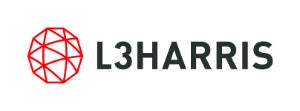The Physical Oceanography Group (PhOG) of University of Maine, School of Marine Sciences, has purchased an Iver2 (model EP42) for research programs, with delivery expected in July of this year. Professor Neal R. Pettigrew’s PhOG research unit has operated an array of oceanographic real-time data buoys and an HF radar network as an integrated ocean observing system (IOOS) in the Gulf of Maine since 2001. They plan to use the Iver2 to extend and verify observations from the buoy array and to carry out detailed surveys as part of their new Maine Center for Autonomous Marine Surveys (MCAMS). Initial tasks for the Iver2 include surveys in Casco Bay and Penobscot Bay that will focus on transport through channels between islands and peninsulas, and small-scale fronts caused by flow around islands and over shoal bottom topography. Iver2 survey data will be combined with current measurements from data buoys to characterise the general circulation of the bays. The Iver2 will also be used for mapping bottom topography and tracking tagged fish in the region.
The Iver2 AUV, equipped with side scan sonar, multi-beam sonar, current profiler (ADCP), and CTD sensors will be an additional asset used for data collection and mapping in the Gulf Maine and other regional waterways. Data collected during Iver2 AUV missions will supplement other methods already in practice, including observations from satellites, ships, buoys, floats, gliders, and cabled instruments. The EP42’s open system architecture also gives the University of Maine the opportunity to add additional internally developed sensors for a range of applications.
The Iver Platform
All Iver2 AUV models come standard with OceanServer’s VectorMap Mission Planning and Data Presentation tool, which provides geo-registered data files that can be easily exported to other software analysis tools. This unique AUV design has enabled OceanServer to carve out a very strong position in the research space for autonomous underwater vehicles, sensors and behavioural studies. The VectorMap program can input NOAA ENCs or any geo-referenced charts, maps or photo images, allowing the operator to intuitively develop AUV missions using simple point-and-click navigation.
The base vehicle, with a starting price at just over $50,000, gives university, government and commercial users an affordable base-platform for sensor development or survey applications in water quality, sub-surface security and general research.

